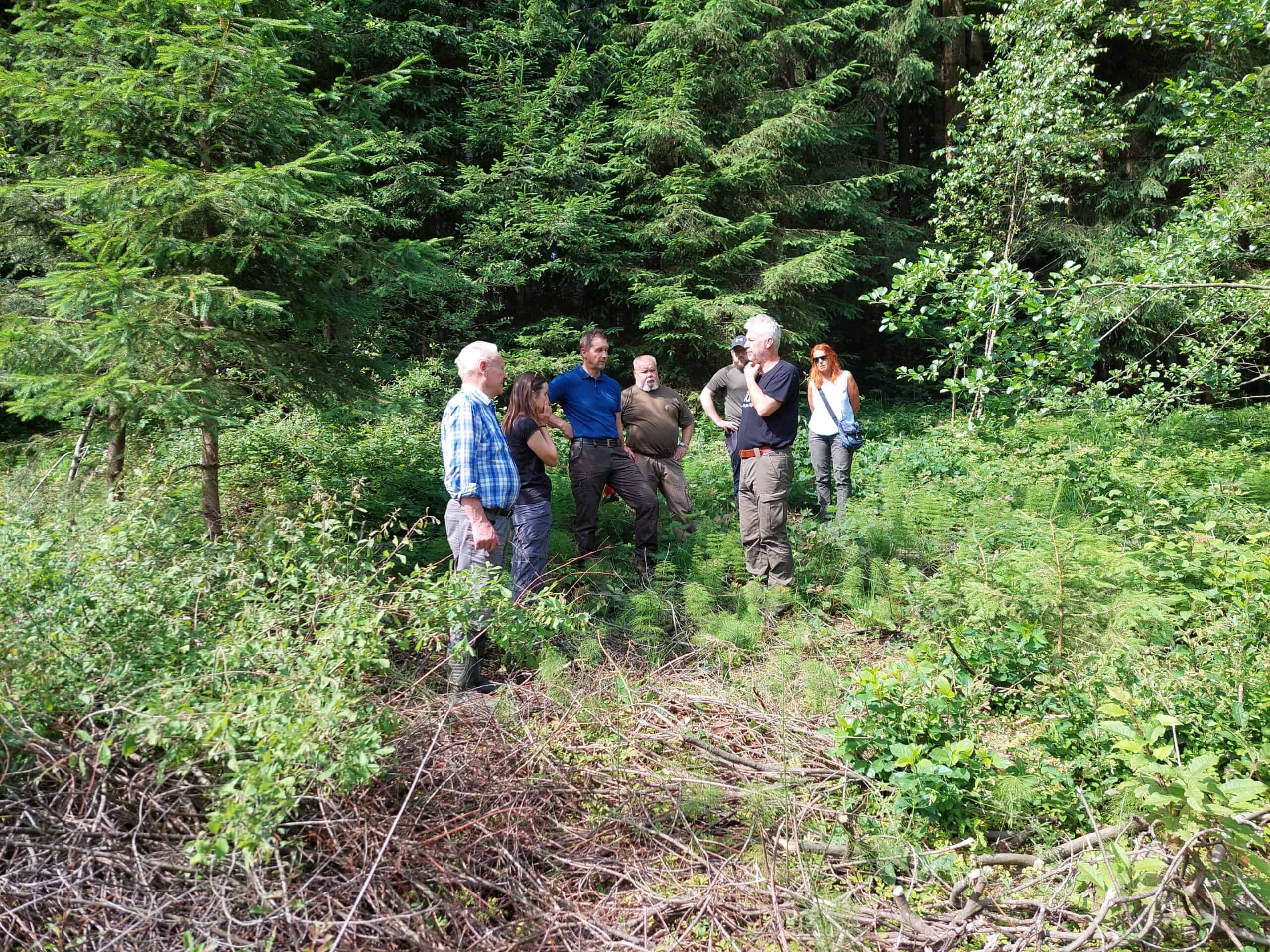When working in the field of conservation, involving local stakeholders is one major aspect to ensure the long-term success of a project.
This is why in I-SWAMP we involved local administrations, NGOs and landowners from the start, beginning with the choice of the sites. Now that we are working on field it is crucial to present, explain and discuss together with our stakeholders the conservation needs and the management and restoration options for the sites, to favor a better collaboration with the local community and a longer-term conservation.
In June, our staff in the IRSNC organized a workshop dedicated to the stakeholders of two important peatland sites: Dolga Brda and Zadnji travnik.
Dolga Brda (“Long hills”) is a marshy valley with several headwaters, overgrown ponds and pools, and a transition mire (a type of peatland that has intermediate characteristics between those of a fen and a bog), hosting several orchid species and two Cordulegaster dragonfly species (C. eros and C. bidentata). The site is menaced by forest overgrowth and intensive farming.
Zadnji travnik (“Last meadow”) is an interesting bog with remains of a glacias moraine, habitat to three different species of Sphagnum moss. The site is menaced by plant overgrowth and uncontrolled cattle grazing and trampling.
The stakeholders, including representative of the Republic of Slovenia (the “landowner”) were taken to the field, where the foreseen activities were discussed, and some tentatives of establishing common guidelines for Alpine wetland conservation in Slovenia were made.
Peatlands, and especially bogs, are remnant habitat in Southern Europe, where they are essentially found on mountain ranges such as the Alps. In most cases they originated from slow accumulation of peat (slightly decomposed plant matter) in fresh and humid environment after last glaciation. They are fragile environment, hosting populations of regionally endangered species of plants and animals. The conservation of such habitats in our region is fundamental, and we must work along with the local communities and stakeholders to ensure their survival facing global warming and the biodiversity crisis.



